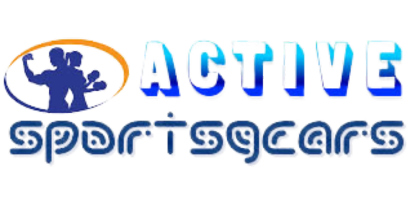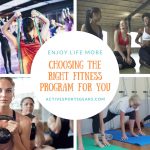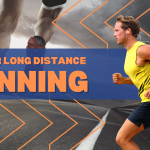Starting a muscle-building journey is a comprehensive procedure that involves more than just training regimens. Understanding the symbiotic relationship between Muscle Building Exercise and the foundational Muscle Building Facts is crucial for those aspiring to sculpt a stronger physique. While exercise routines lay the groundwork for muscle development, the facts surrounding muscle building guide individuals in crafting effective workout plans, optimizing recovery, and achieving sustainable results.

Best Muscle Building Exercise:
Squats: Squats stand as a foundational muscle building exercise, engaging the quadriceps, hamstrings, glutes, and lower back in a compound movement. This full-body exercise is pivotal for cultivating comprehensive lower body strength and power. Proper squat form is imperative for ensuring optimal muscle activation and fostering substantial growth. By integrating squats into your routine, you lay a robust foundation for overall muscle development and functional strength.
Deadlifts: Deadlifts are an unparalleled muscle building exercise targeting the hamstrings, glutes, lower back, and core. Recognized for their effectiveness in promoting posterior chain strength, deadlifts also play a vital role in overall muscle development. This exercise not only enhances stability but also contributes significantly to improved grip strength. Incorporating deadlifts into your regimen elevates your muscle-building efforts, fostering a balanced and powerful physique.
Bench Press: The bench press is a classic upper body muscle building exercise that primarily activates the chest, triceps, and shoulders. Essential for sculpting a strong and well-defined chest, variations like incline and decline bench presses allow for targeted emphasis on specific muscle areas. By incorporating the bench press into your routine, you prioritize upper body strength, fostering a robust and aesthetically pleasing physique.
Overhead Press (Shoulder Press): Overhead presses are indispensable muscle building exercises concentrating on the shoulders and triceps. Vital for enhancing shoulder stability, this exercise contributes to a well-rounded upper body. Its inclusion in your routine is crucial for preventing muscle imbalances and achieving overall upper body symmetry. Incorporate overhead presses to bolster your muscle-building endeavors with a focus on balanced shoulder development.
Barbell Rows: Barbell rows zero in on the upper back, engaging the rhomboids, trapezius, and biceps. This muscle building exercise is indispensable for cultivating a strong and well-defined back. Proper form is pivotal to maximize muscle engagement, ensuring optimal results while mitigating the risk of strain. By incorporating barbell rows into your regimen, you prioritize comprehensive upper back development, enhancing overall muscle symmetry.
Pull-Ups/Chin-Ups: Pull-ups and chin-ups represent excellent bodyweight muscle building exercises, primarily activating the latissimus dorsi (Lats) and biceps. These fundamental movements contribute significantly to upper body strength and development. Moreover, they enhance grip strength, offering adaptability for individuals at varying fitness levels. Integrating pull-ups and chin-ups into your routine provides a challenging and effective means to bolster upper body endurance and overall muscle definition.
Dips: Dips are impactful muscle building exercises targeting the chest and triceps. This bodyweight movement proves highly effective for building upper body strength and fostering muscle definition. Ensuring proper execution is key to optimizing engagement of the targeted muscle groups. By incorporating dips into your routine, you prioritize comprehensive upper body development, contributing to a well-rounded and sculpted physique.
Leg Press: The leg press stands as a machine-based muscle building exercise primarily activating the quadriceps, hamstrings, and glutes. Particularly beneficial for individuals facing challenges with free-weight squats, the leg press provides a controlled environment for cultivating lower body strength. Incorporating leg presses into your regimen ensures a balanced approach to muscle development, fostering strength and endurance in the lower body.
Dumbbell Lunges: Dumbbell lunges are unilateral muscle building exercises working the quadriceps, hamstrings, and glutes. This exercise enhances balance and coordination while targeting each leg individually, addressing potential muscle imbalances. Integrating dumbbell lunges into your routine proves effective for stimulating muscle growth and promoting functional lower body strength.
Barbell Curls: Barbell curls are isolation muscle building exercises focusing on the biceps and forearms. This exercise is pivotal for developing arm strength and size. Variations like preacher curls or hammer curls can be seamlessly incorporated to diversify your arm training routine. By prioritizing barbell curls, you emphasize balanced upper body aesthetics and overall muscle symmetry in your muscle-building endeavors.

Muscle Building Facts
1. Building muscle has a lot to do with genetics.
If your parents possess a naturally slender physique or have a small bod All Posts frame, chances are you may inherit similar traits. However, this doesn’t imply that building a robust, muscular body is unattainable for you. It simply indicates that you’ll need to put in diligent effort. Muscle Building Facts emphasize that genetic factors play a role, but hard work remains crucial.
2. Your metabolism has an effect on your size.
Facing challenges in gaining weight, whether in the form of muscle or fat, may be an indication of a fast metabolism. In such cases, your body tends to burn calories at a rapid pace, outpacing your ability to consume them. Understanding Muscle Building Facts becomes essential, highlighting the need for strategic nutrition and training to overcome such hurdles.
3. There is no universal weight training program that is going to get massive results for every individual person.
Discovering a suitable workout program involves finding someone with a similar body type who has achieved the results you desire. While standard exercises play a role in muscle building, it’s crucial to acknowledge that there’s more to this process than just weight lifting. Understanding Muscle Building Facts emphasizes the need for a comprehensive approach that includes various elements beyond traditional exercises.
4. More training doesn’t mean more muscle.
Understanding the purpose of weight training is crucial; it’s primarily about stimulating muscle growth. However, the process doesn’t end there. Effective muscle building entails allowing the muscles to repair and facilitating the construction of new muscle fibers. This transformative phase occurs during periods of rest and recovery, underlining the importance of a balanced approach to training. Recognizing Muscle Building Facts emphasizes the significance of rest in the muscle-building process.
5. Isolation exercises aren’t going to get you big fast.
6. Free weights build muscle quicker.
Opting for free weights over machines is recommended due to the increased demand they place on your body. Free weights necessitate greater concentration and facilitate the activation of supporting muscles, contributing to a more comprehensive workout. While machines can be beneficial for beginners in terms of form and basic control, they may limit the overall effectiveness of the exercise. Incorporating Muscle Building Facts underscores the importance of choosing the right equipment for a workout that stimulates muscle growth effectively.
7. No Pain, No Gain.
Repetitively lifting the same weights won’t contribute to significant muscle growth; in fact, it may hinder progress. Building muscle requires lifting heavy weights to stimulate Type IIB muscle fibers, responsible for substantial muscle gain. Lifting heavy involves reaching muscle failure within 4-8 reps, emphasizing the need for intensity in your weightlifting routine. Acknowledging Muscle Building Facts underscores the significance of challenging your muscles with appropriate resistance for optimal results.
8. Long training sessions are a NO-GO
The focus should be on stimulating muscles rather than targeting every possible angle, particularly relevant for advanced bodybuilders aiming for muscle tone. Prolonged training sessions lead to a significant increase in catabolic hormone levels, responsible for muscle tissue breakdown and potential muscle loss. To mitigate this, adhering to shorter weight training sessions, lasting no more than 60-75 minutes, becomes crucial, aligning with Muscle Building Facts to optimize muscle-building processes.
9. You don’t need aerobic activity to lose fat.
While aerobic activities are beneficial for fat loss, their effectiveness may diminish on a high-calorie mass diet geared towards muscle building. Allocating time to muscle building exercises, like weight training, instead of running or swimming, becomes crucial for optimal results and recovery. Emphasizing the significance of optimizing the muscle building process aligns with Muscle Building Facts. Prioritizing muscle building proves to be a swifter path to fat loss, highlighting the efficiency of targeted exercises in achieving comprehensive fitness goals.
10. 3 square meals a day isn’t going to help you build muscle.
Relying on three square meals a day may not be sufficient for those aiming to build muscle effectively. To support muscle development, consider adopting a nutrition strategy that involves consuming smaller, well-balanced meals spread throughout the day, approximately every three hours. This approach not only enhances metabolism but also ensures a continuous supply of nutrients to support muscle growth and repair. By breaking down your daily caloric intake into more frequent meals, you provide your body with a consistent stream of essential nutrients, optimizing the muscle-building process.




